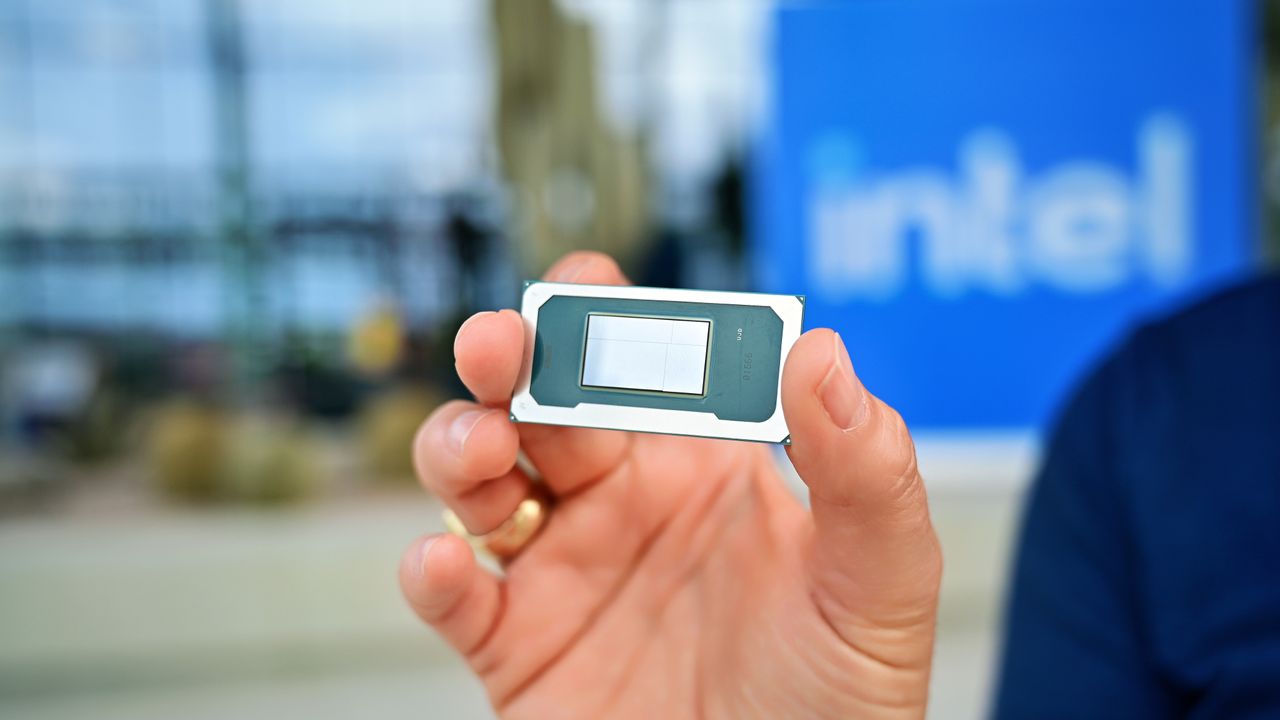
I recently enjoyed a trip to Arizona for Intel Tech Tour 2025, a sizable event pulling together dozens of press members, analysts, and content creators to witness the unveiling of Intel's next generation mobile chips.
Intel Panther Lake is here, and it's the first platform built on the 2nm Intel 18A processing node — made possible by the cutting-edge tools and equipment inside Fab 52, the latest addition to Intel's massive Ocotillo campus in Chandler, AZ.
Panther Lake promises to bring the fight straight to AMD and Qualcomm with faster, smarter, longer lasting, and more modular chipsets than ever — able to scale across workloads and hardware form factors like never before. Here's everything you need to know about what will be known as Intel Core Ultra (Series 3).
More modular and scalable than ever before
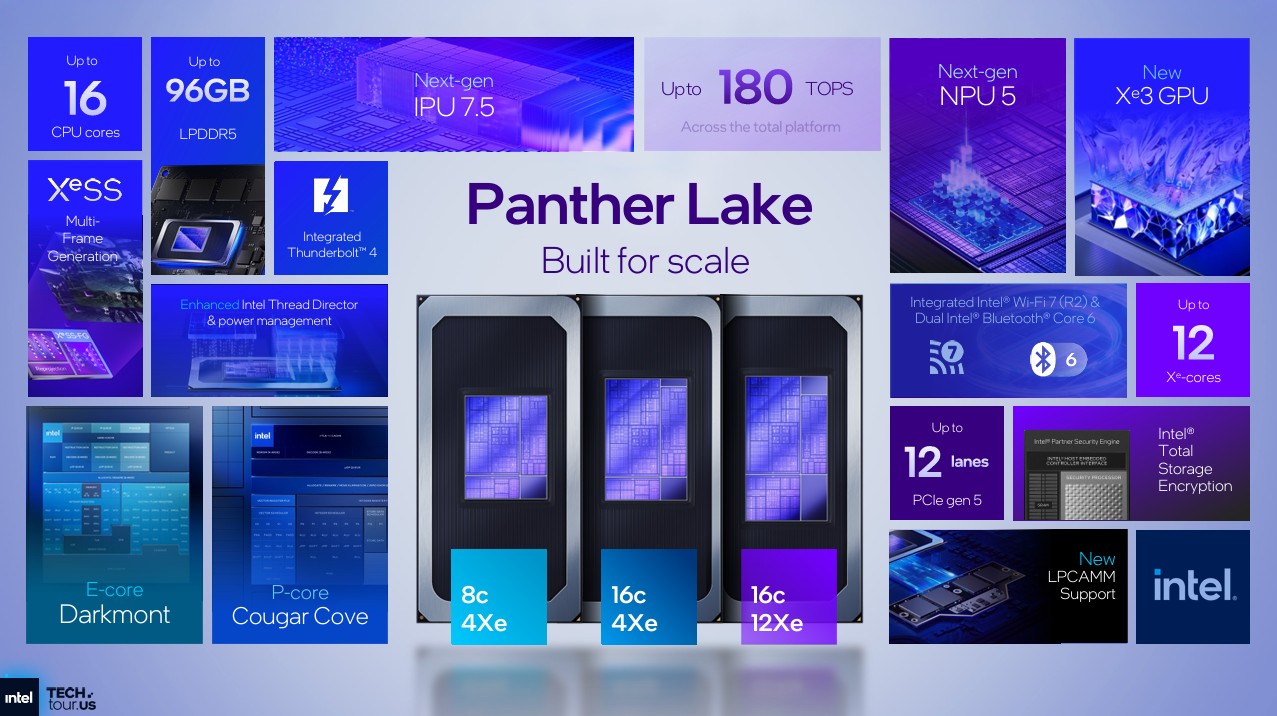
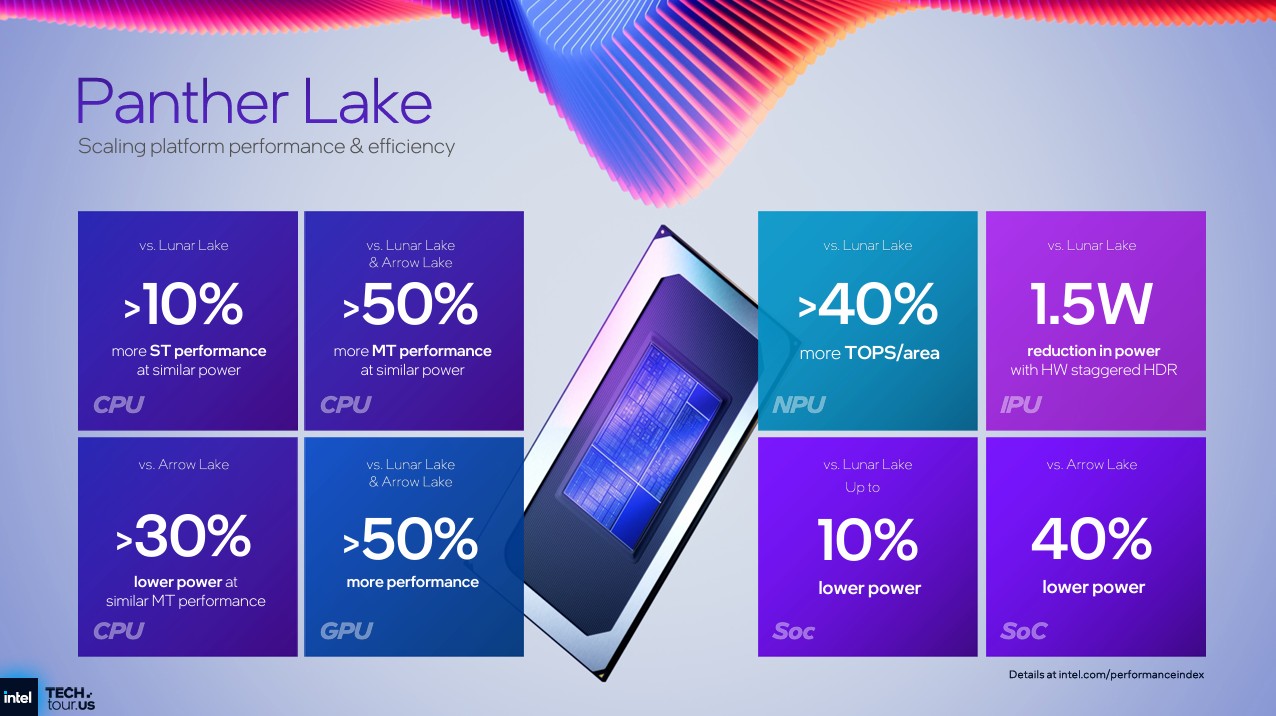
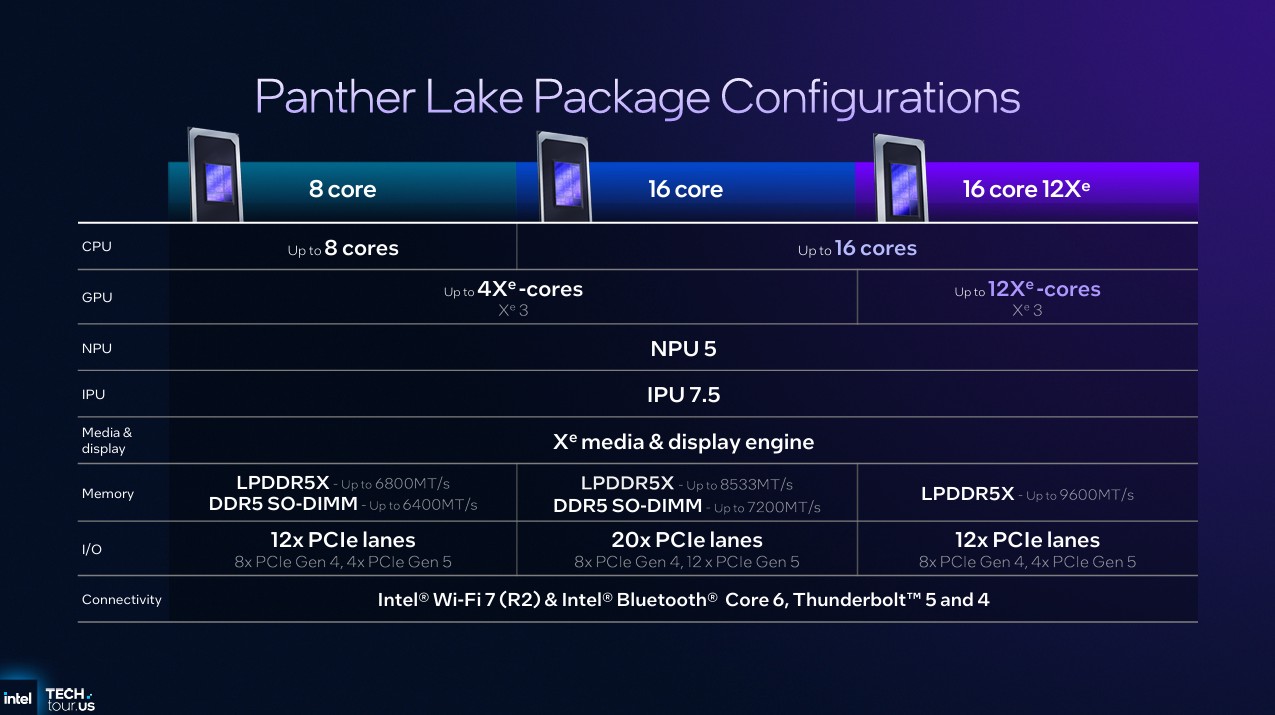
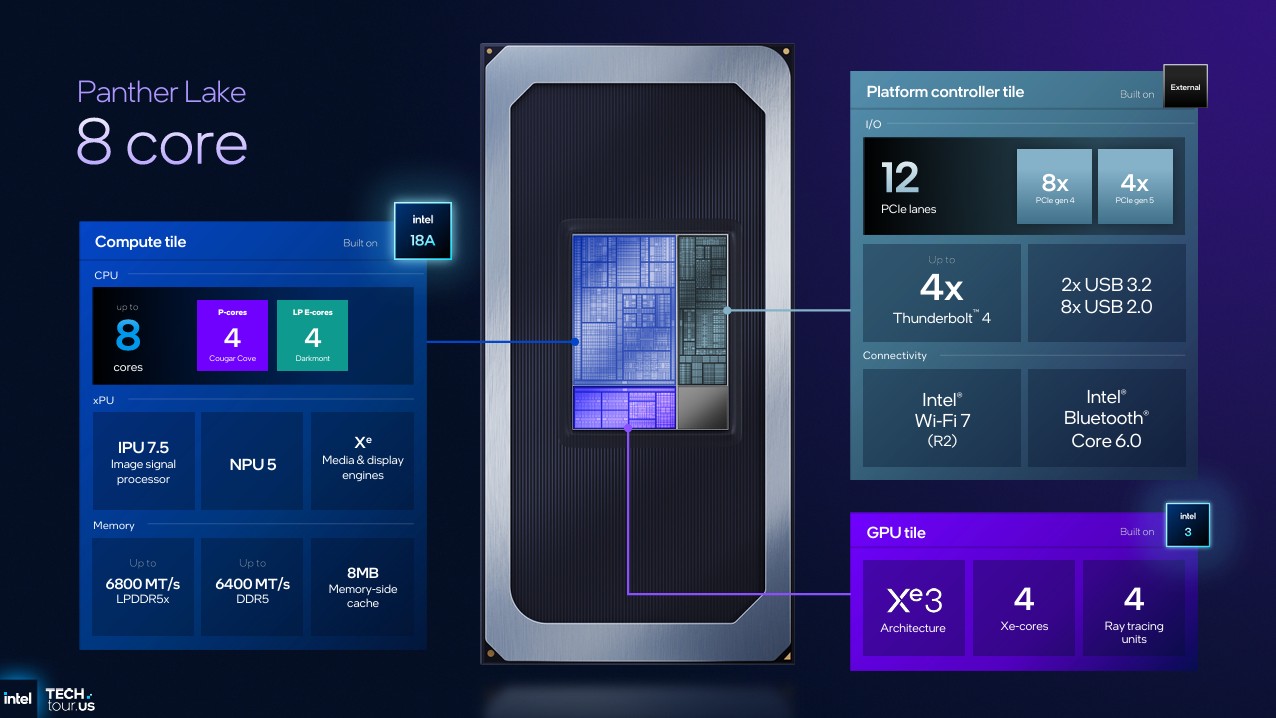
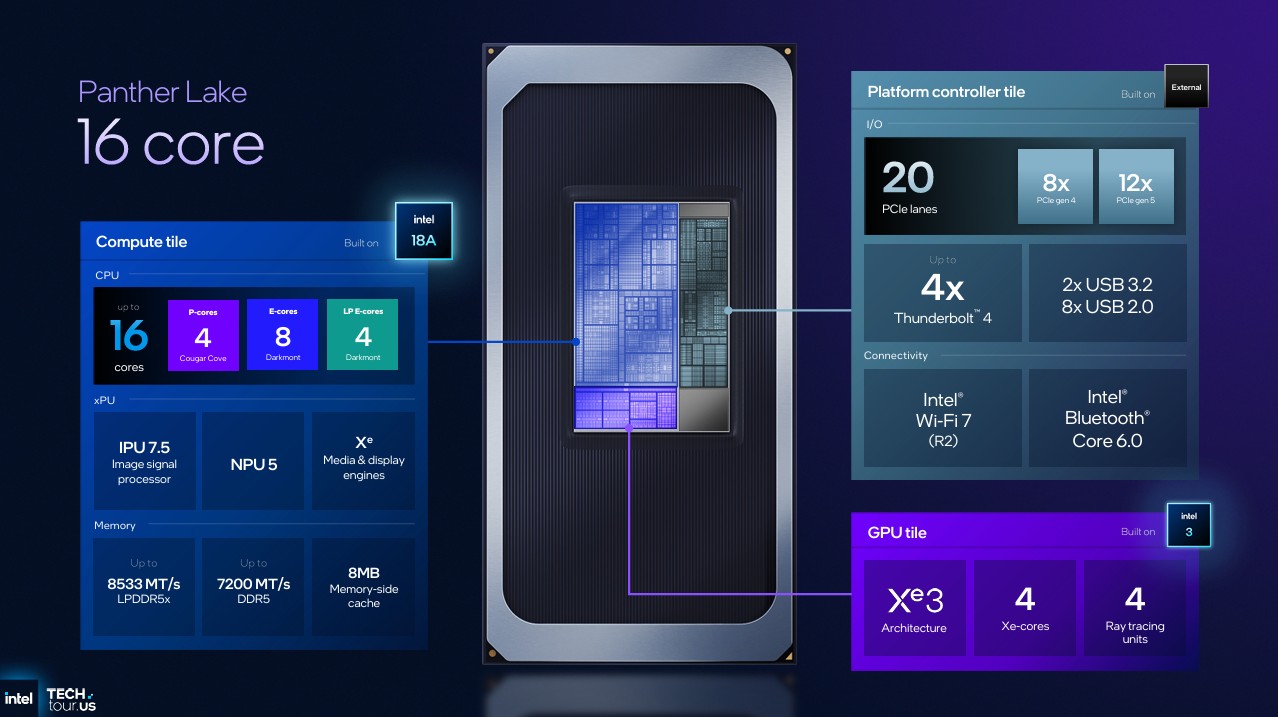
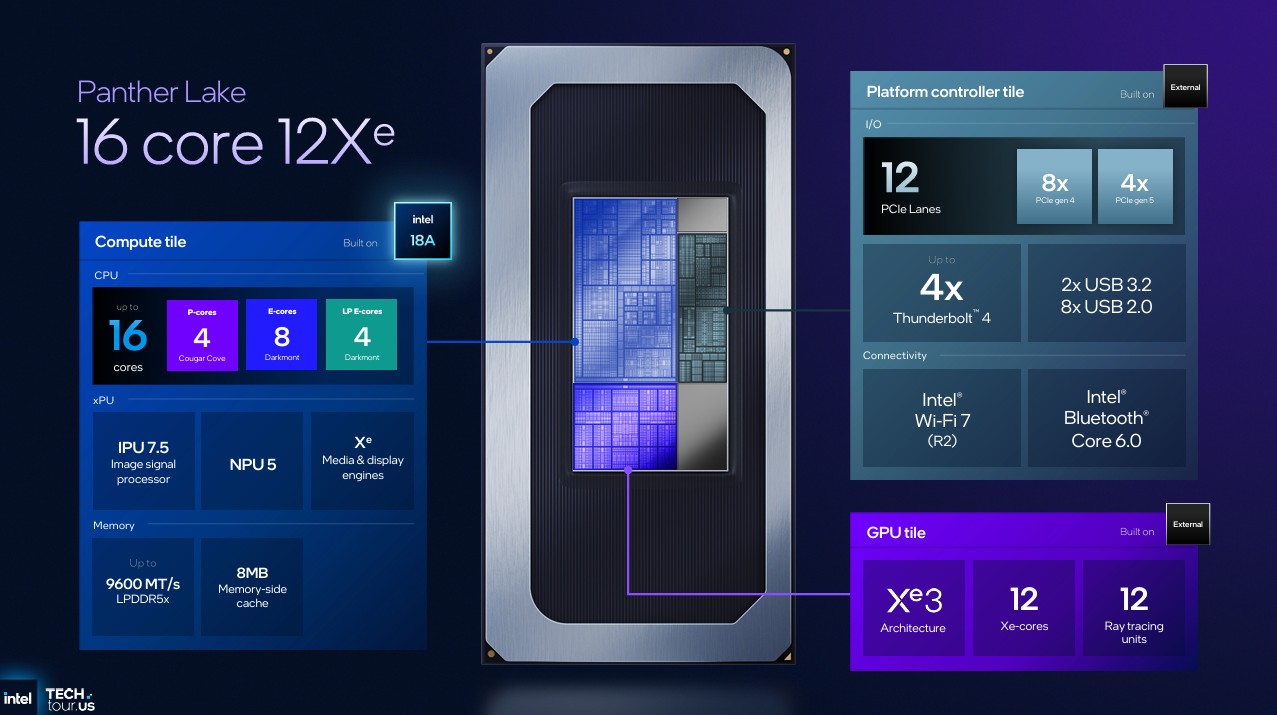
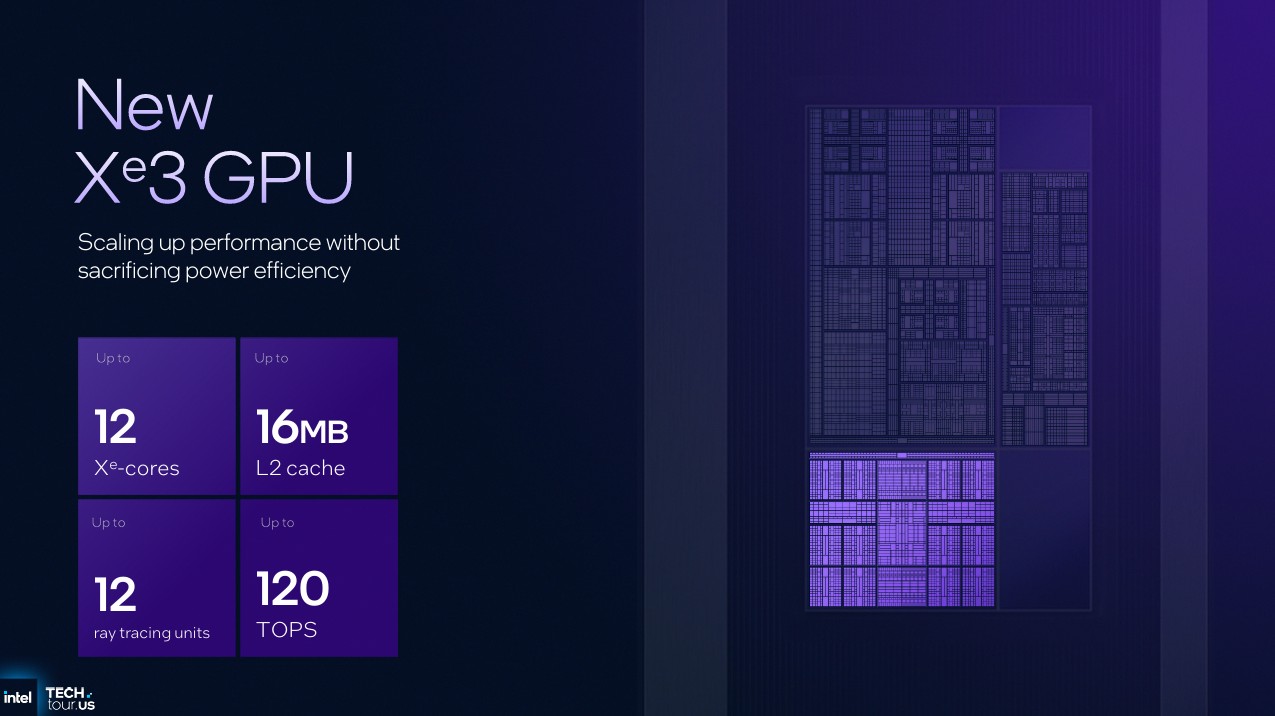
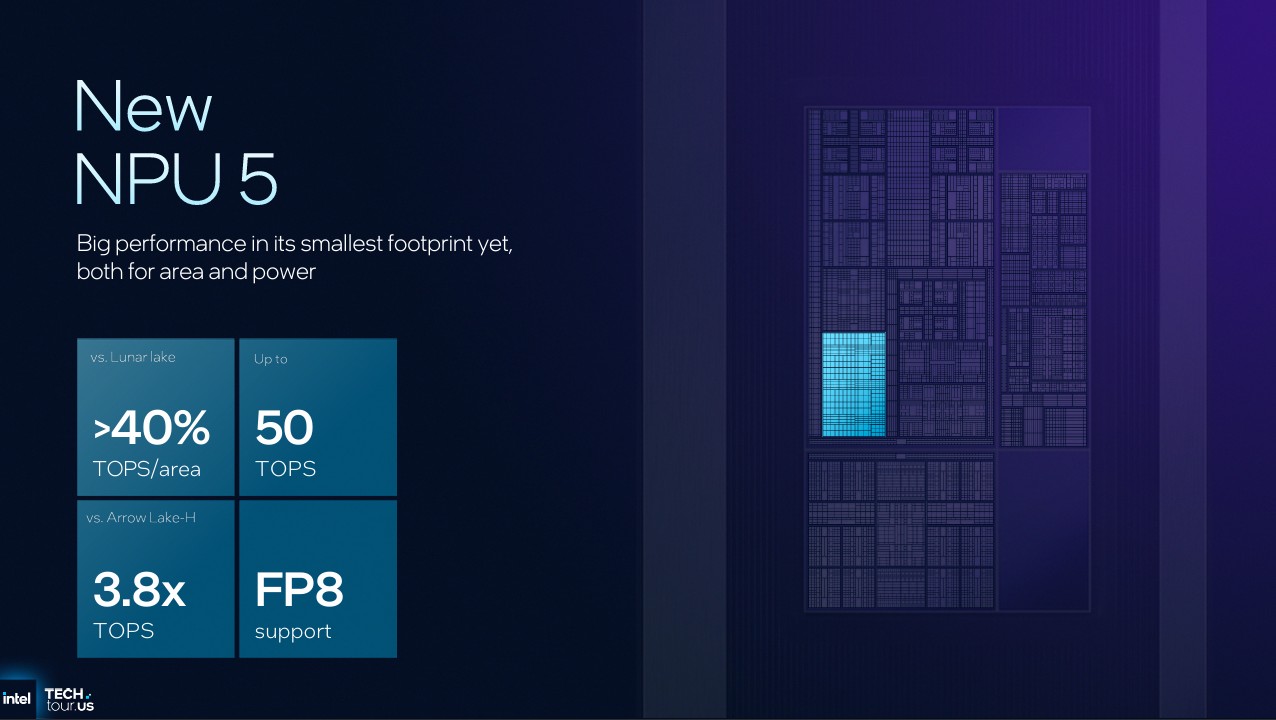
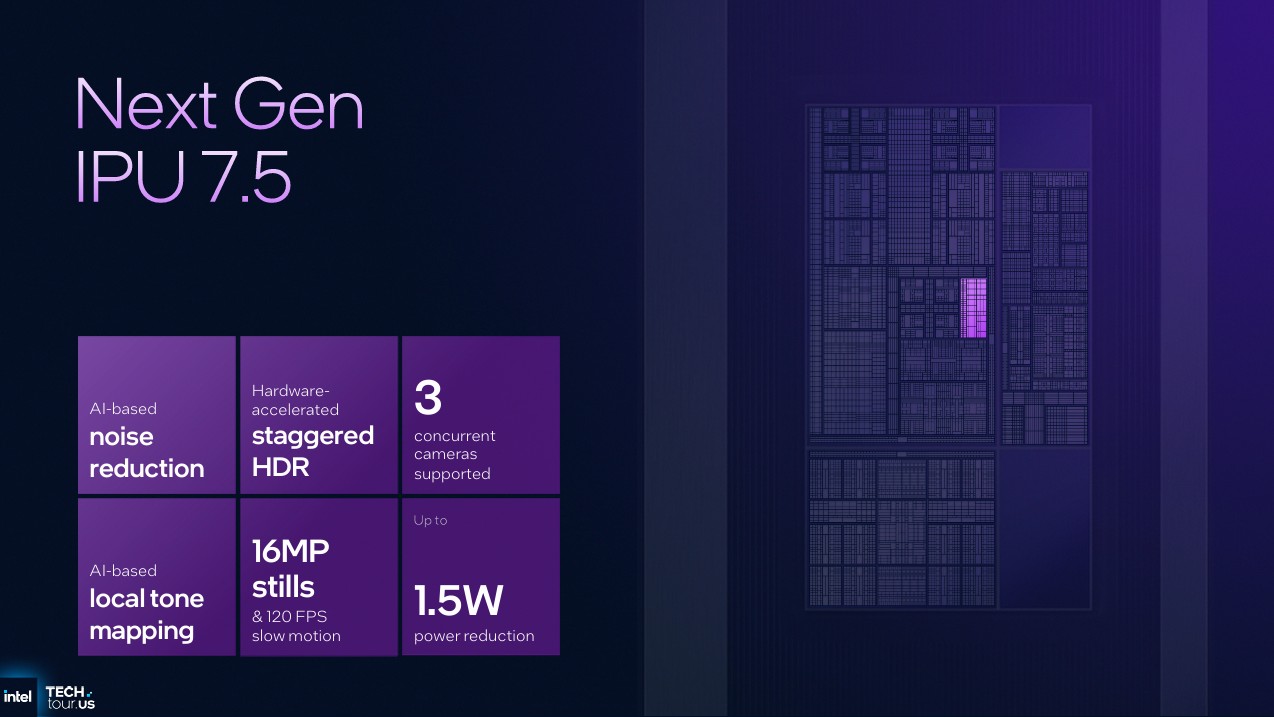
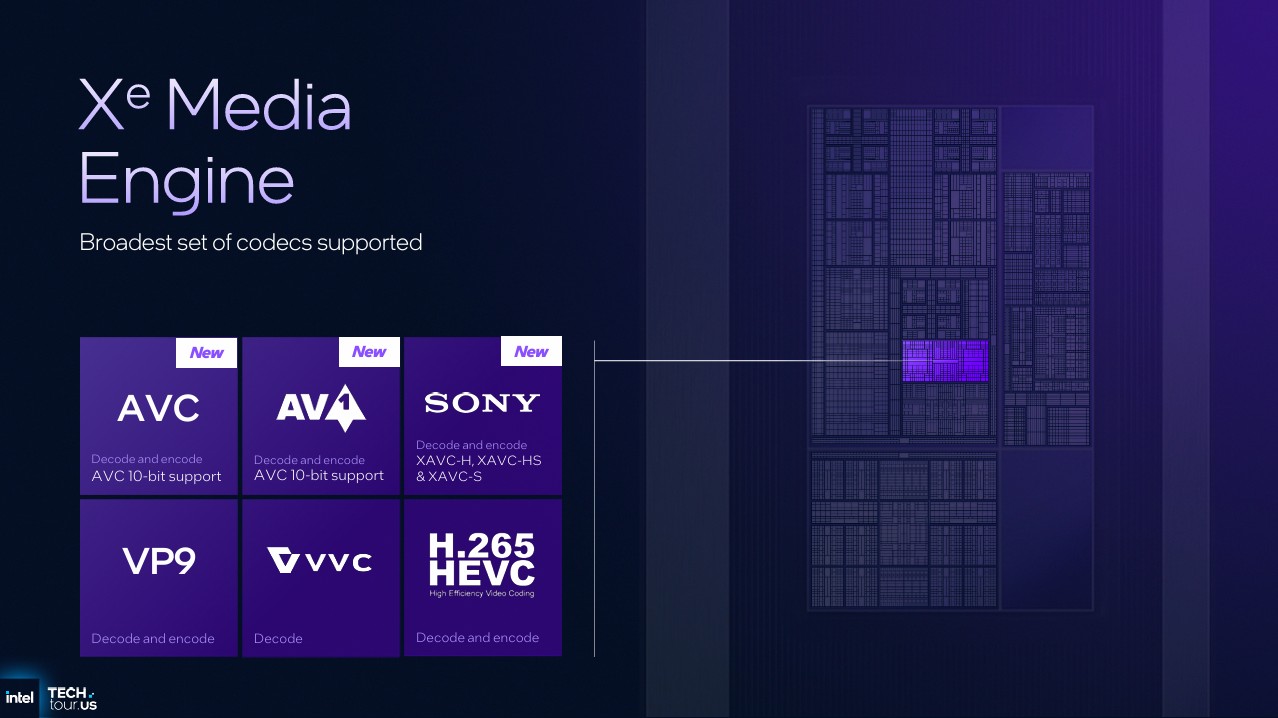
Intel is clearly betting big on Panther Lake, which lays the foundation for the direction all of Intel's products are heading in the future. But what makes Panther Lake special?
A new, more modular and scalable packaging, next-gen compute cores built on Intel's latest process, more capable Intel Arc Xe3 integrated GPUs, and upgrades across the board to Intel's AI engine, image signal processing and media engines, memory bandwidth, and connectivity.
I'll dedicate separate articles to my tour of Fab 52 and in-depth breakdown of the Intel 18A processing node, and to my detailed explanation on Panther Lake's graphical capabilities with Xe3 and new XeSS 3 features. For now, let's focus on Panther Lake itself.
Feature |
Panther Lake 8-core |
Panther Lake 16-core |
Panther Lake 16-core 12Xe |
|---|---|---|---|
Architecture |
x86 |
x86 |
x86 |
Processing node |
Intel 18A, 2nm |
Intel 18A, 2nm |
Intel 18A, 2nm |
Performance cores |
4x Cougar Cove P-cores |
4x Cougar Cove P-cores |
4x Cougar Cove P-cores |
Efficiency cores |
N/A |
8x Darkmont E-Cores |
8x Darkmont E-Cores |
Low-power efficiency cores |
4x Darkmont LP E-cores |
4x Darkmont LP E-cores |
4x Darkmont LP E-cores |
Graphics Processing Unit |
4x Xe3 cores, 4x ray-tracing cores |
4x Xe3 cores, 4x ray-tracing cores |
12x Xe3 cores, 12x ray-tracing cores |
Neural Processing Unit |
Intel NPU 5, up to 50 TOPS |
Intel NPU 5, up to 50 TOPS |
Intel NPU 5, up to 50 TOPS |
Image Signal Processing Unit |
Intel IPU 7.5, 3x concurrent cameras, staggered HDR |
Intel IPU 7.5, 3x concurrent cameras, staggered HDR |
Intel IPU 7.5, 3x concurrent cameras, staggered HDR |
Memory support |
Up to 96GB LPDDR5x @ 6,800 MT/s, up to 128GB DDR5 @ 6,400 MT/s, 8MB side cache, LPCAMM module support |
Up to 96GB LPDDR5x @ 8,533 MT/s, up to 128GB DDR5 @ 7,200 MT/s, 8MB side cache, LPCAMM module support |
Up to 96GB LPDDR5x @ 9,600 MT/s, 8MB side cache, LPCAMM module support |
PCIe lanes |
8x PCIe Gen4, 4x PCIe Gen5 |
8x PCIe Gen4, 12x PCIe Gen5 |
8x PCIe Gen4, 4x PCIe Gen5 |
Wireless connectivity |
Wi-Fi 7 (R2), Bluetooth Core 6.0 |
Wi-Fi 7 (R2), Bluetooth Core 6.0 |
Wi-Fi 7 (R2), Bluetooth Core 6.0 |
I/O support |
Up to 4x Thunderbolt 4, 2x USB 3.2, 8x USB 2.0 |
Up to 4x Thunderbolt 4, 2x USB 3.2, 8x USB 2.0 |
Up to 4x Thunderbolt 4, 2x USB 3.2, 8x USB 2.0 |
Intel's Panther Lake uses an advanced System-of-Chips (SoC) design that embeds and stacks multiple interchangeable chiplets, allowing Intel to support a multitude of configurations on the same platform. This generation is even more modular thanks to a separated GPU tile.
Panther Lake's greatest upgrades are due to Intel 18A, which Intel claims is one of the most advanced semiconductor processing nodes on the planet thanks to two new technologies. RibbonFET and PowerVia fundamentally change how the transistors and the chips themselves are laid out to massively improve efficiency and scalability, and Intel is the only company delivering both — right here in the United States.
Intel detailed three different configurations, but didn't share exact specs like clock speeds or individual SKUs. The 8-core configuration is almost certainly intended for portable ultrabooks, while the standard 16-core configuration seems geared toward powerful laptops with discrete GPUs (thanks to the extra PCIe lanes). Finally, the 12Xe configuration feels aimed at users who need as much graphical oomph as possible without relying on a discrete GPU.
Whatever configuration or SKU Intel releases, though, every Intel Core Ultra chip built on this platform will benefit from the same suite of improvements and features.
The best of Lunar Lake and Arrow Lake in one
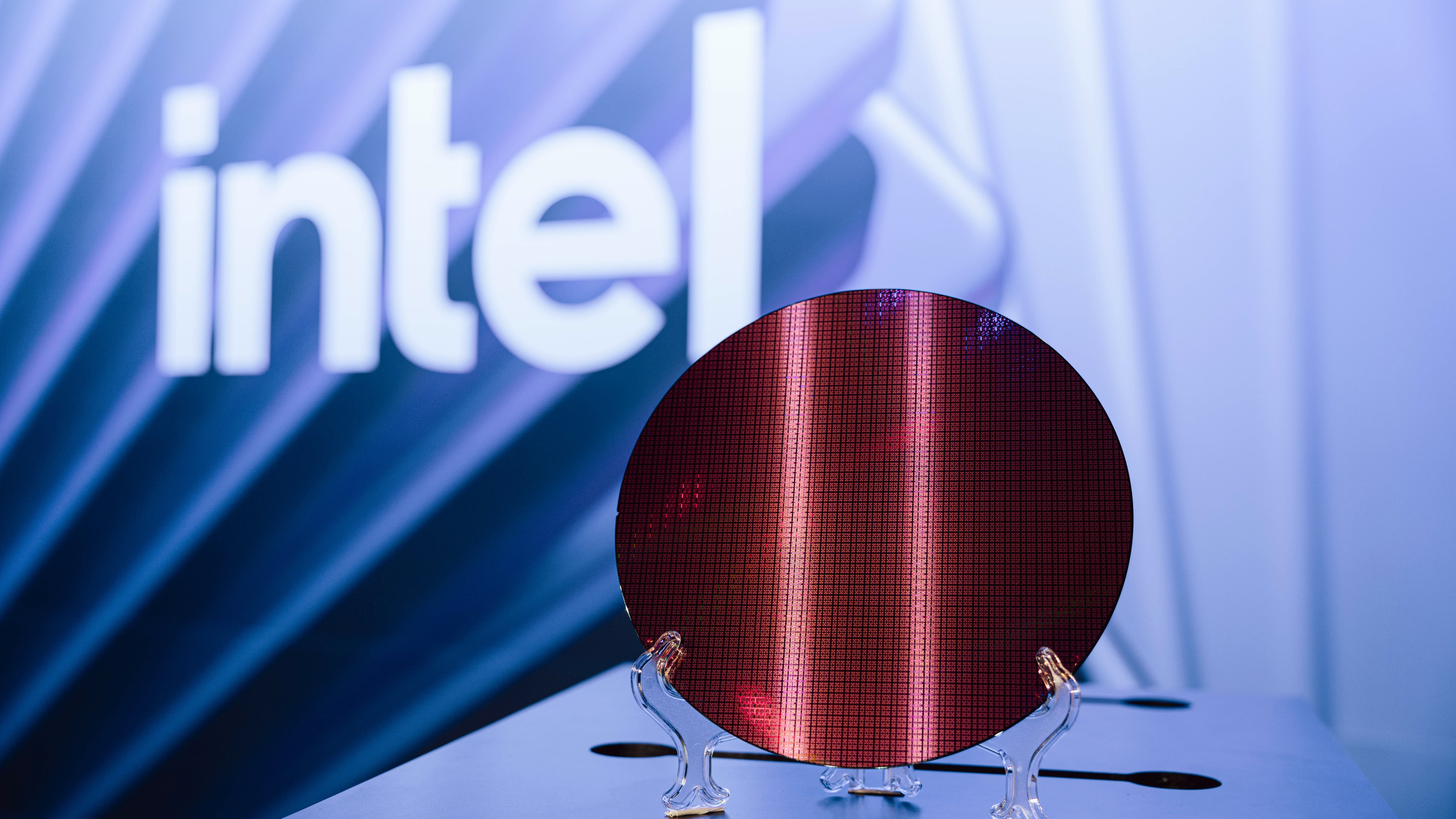
Intel impressed us with Lunar Lake, or Core Ultra 2V-series, an 8-core x86 platform that delivered stellar efficiency and reliable performance to thin and light Windows 11 laptops. Intel then followed that with Arrow Lake, a diverse family spanning mobile and desktop form factors.
We've been a big fan of Lunar Lake, which sits nicely between Qualcomm's efficient Snapdragon X series and AMD's highly capable Ryzen AI series, and the Arrow Lake series offered much more computational power at the expense of AI smarts (with a considerably weaker NPU).
Panther Lake aims to combine the best of Lunar Lake and Arrow Lake, at least with mobile hardware, scaling from ultraportable notebooks to powerful gaming laptops and creator workstations — all connected by Intel's growing artificial intelligence ambitions.
Major semiconductor advancements and a plethora of microarchitecture improvements lead to more than 10% improved single-thread performance versus Lunar Lake and more than 50% improved multi-thread performance versus Lunar Lake and Arrow Lake with similar power draw (or more than 30% lower power with similar performance). In general, Intel promises up to 10% lower power consumption compared to Lunar Lake and up to 40% lower power consumption compared to Arrow Lake.
Intel Panther Lake looks really promising, but Qualcomm is preparing to put up a fight in 2026.
Intel even hinted that these gaps may be even larger once Panther Lake devices actually hit users' hands, thanks to ongoing improvements to features like Intel's Thread Director and Power Management.
All I can say for certain is that Panther Lake will have to compete with Qualcomm's newly announced Snapdragon X2 series, which boasts even greater gen-over-gen improvements. It'll be interesting to see if Intel's 18A investments will pay off with Panther Lake, which is expected to start appearing in new hardware in early 2026.
For desktop users, you'll have to wait longer for Intel Nova Lake, the desktop counterpart to Panther Lake that we're expecting to see later in 2026. Intel is confident about Nova Lake after the disappointing launch of Arrow Lake on desktop, as it'll benefit from all the same 18A node advancements as the mobile-oriented Panther Lake.
If you're affected by Windows 10's imminent end-of-life and are considering a new laptop, it may be worth waiting a few more months to see what Intel, Qualcomm, and (possibly) AMD will accomplish with their next-gen chips.

Follow Windows Central on Google News to keep our latest news, insights, and features at the top of your feeds!







